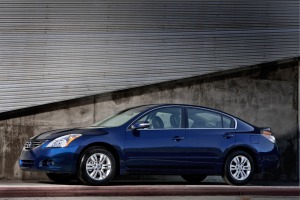The Nissan Leaf's EPA window sticker touts "99 miles per gallon" in large font. Since the Leaf is a fully electric car and does not burn gasoline, this might seem odd. But look more closely and you'll see the Leaf's "99" is actually an mpg-equivalent (mpg-e) figure, which is the Environmental Protection Agency's (EPA) way of converting the power used by an electric vehicle (EV) into a term familiar to most Americans. This 99 mpg-e number is ultimately more useful for comparing energy consumption than fuel costs, but we'll decode the EPA's electric-car mpg stats and explain what it means ... Back to article
- Print |
- Save |
- Email |
- RSS |
- Newsletter
You have saved this page | See all saved pages
Advertisement
Cars with over 20 MPG
Car Tips and Advice
Marketplace
Edmunds Community
Edmunds Forums
Join these discussions:







All Article Comments
2 comments
By rbdiamond1
on 01/10/11
3:49 PM PST
The article misses a major point, which is the total cost of ownership. An electric motor has no oil changes, etc. I would like to see an analysis that calculates typical maintenance of an internal combustion engine vs. an electric motor.
Recommend (4) (1)
Report It
By iisi50mhz
on 04/05/11
8:15 PM PST
If the SI abbreviation for "meters" is "m" and the standard (Imperial unit) abbreviation for "miles" is "mi.", then shouldn't "kWh/100m" be interpreted as "kWh per 100 meters" and "kWh/100 mi." be used for "kWh per 100 miles"?
Recommend (0) (0)
Report It